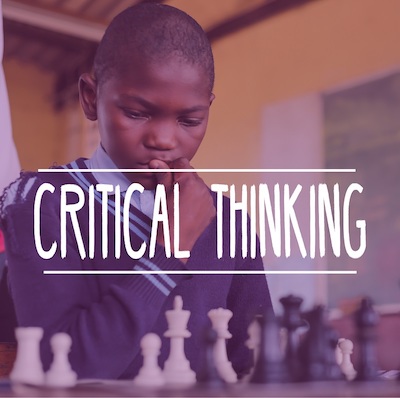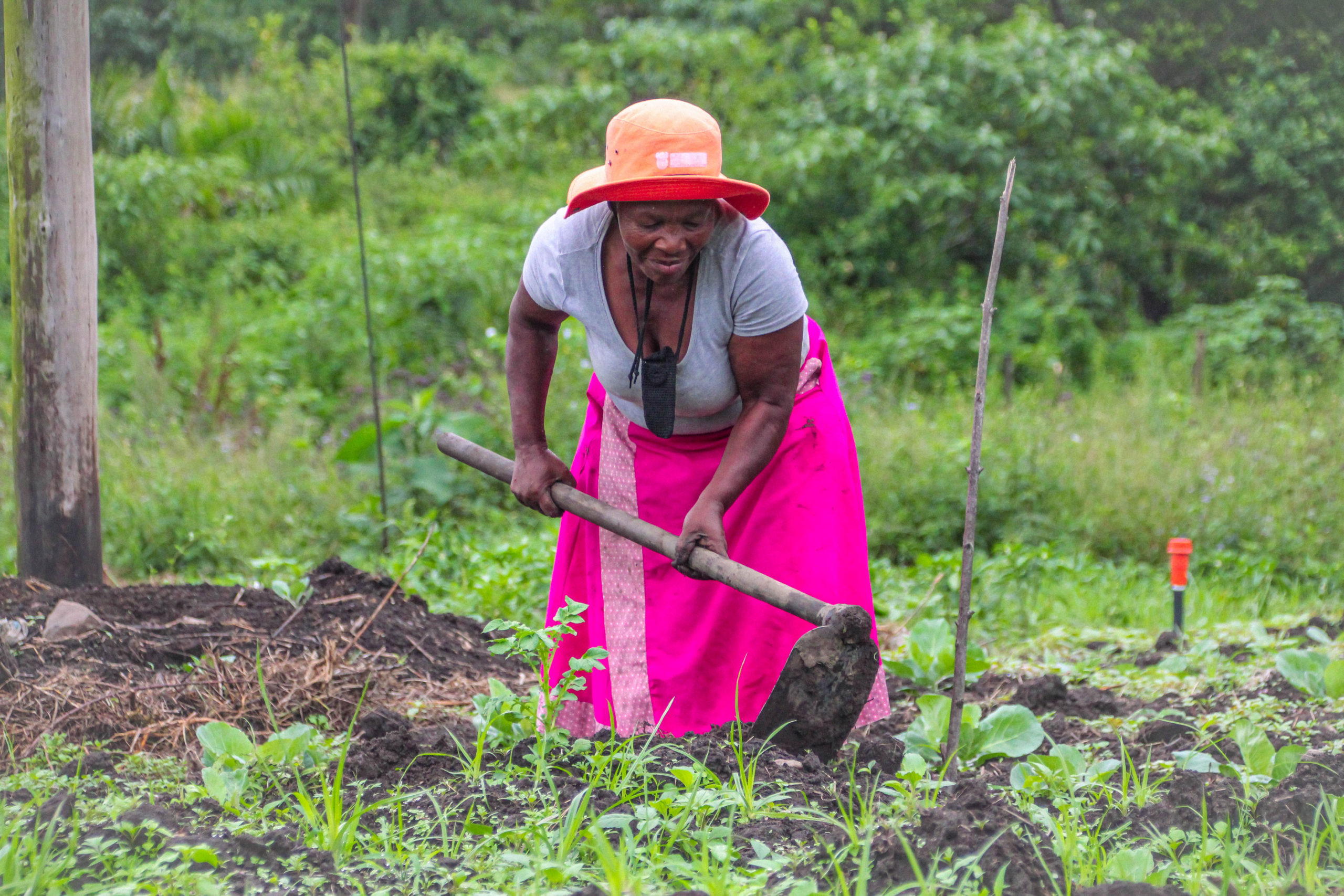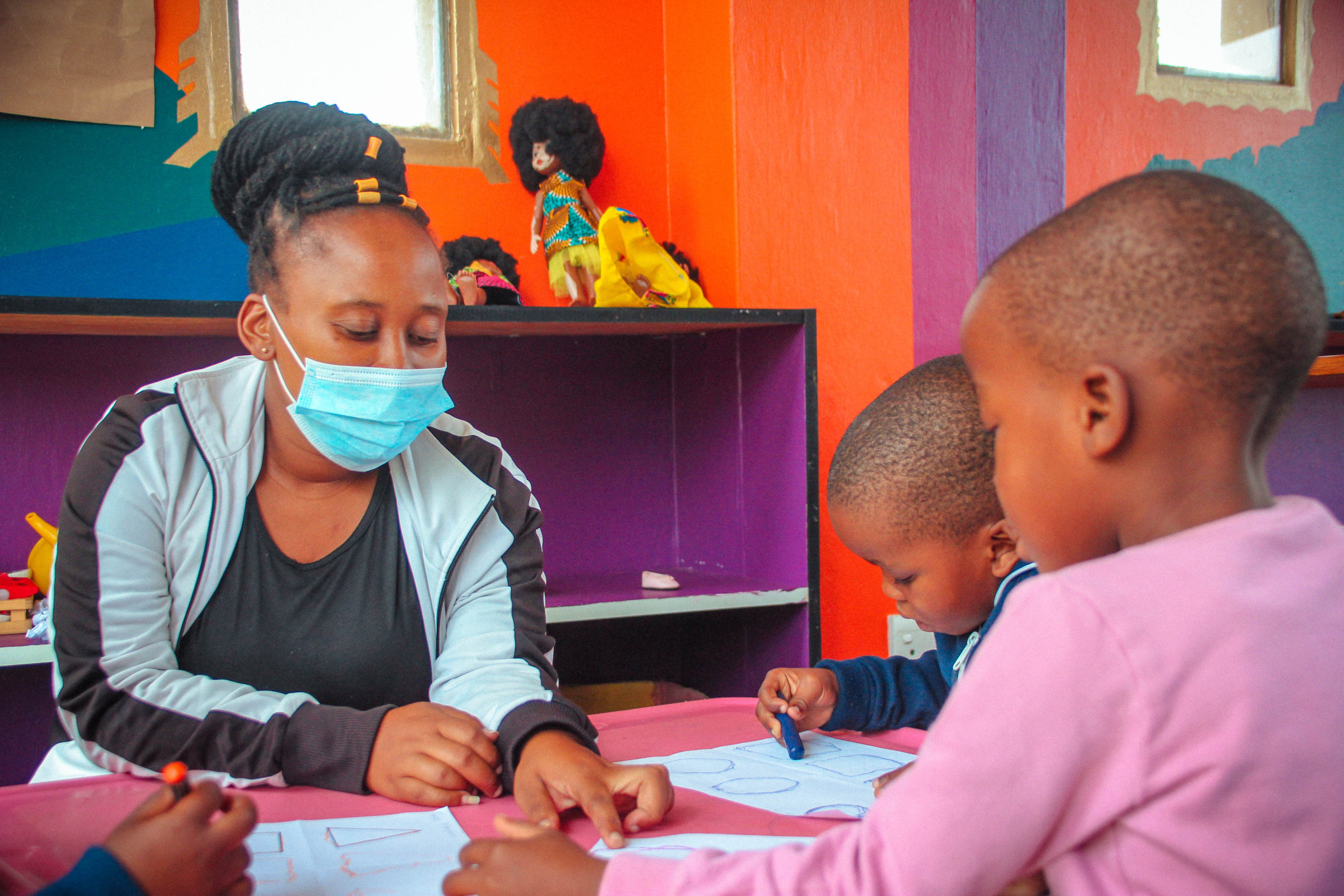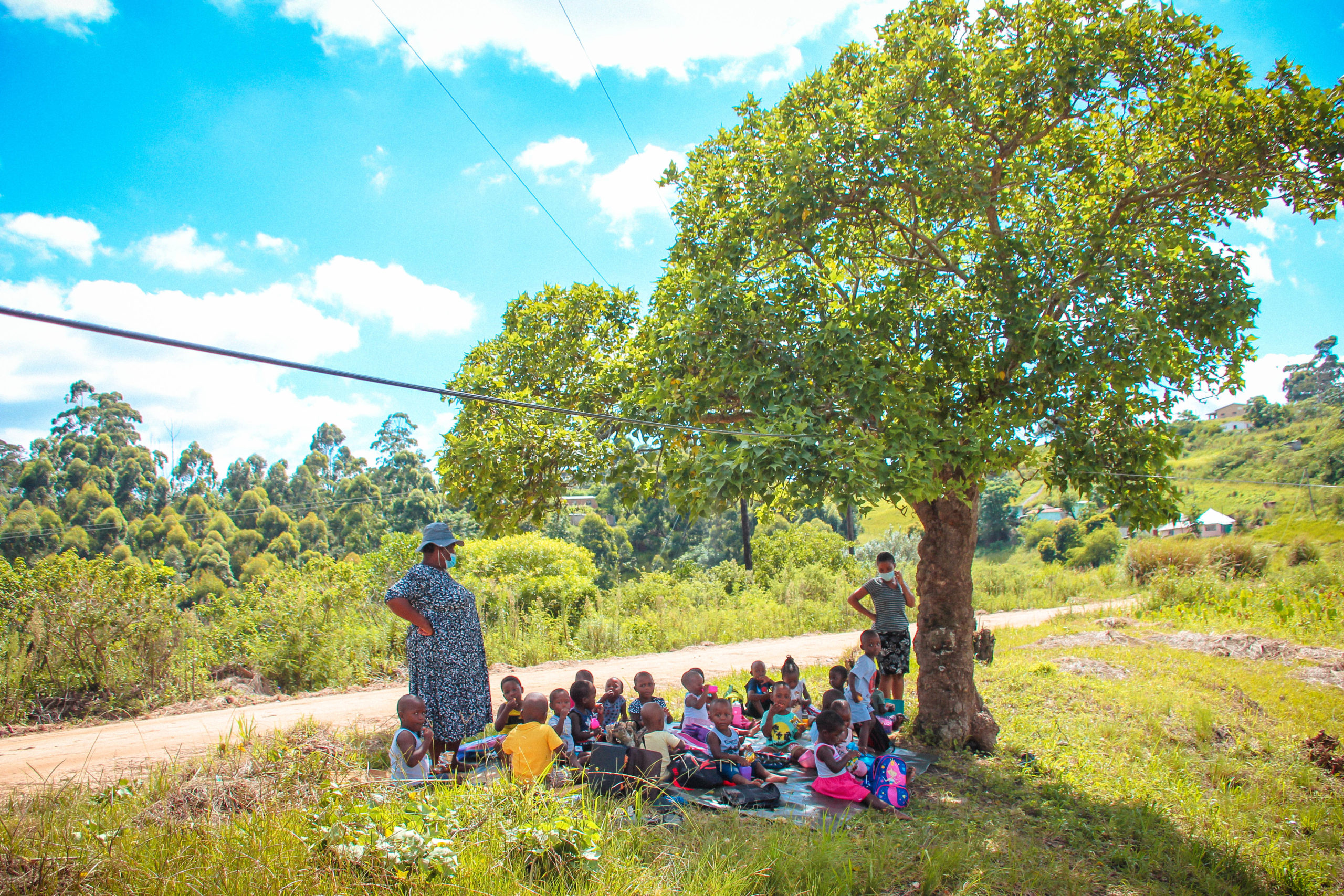Du iz tak? Ma nazoot.
Me ebadow unk plonk. Du kimma plonk?
Above are some of the opening lines of Carson Ellis’ book, Du Iz Tak, which was recently introduced into Thanda’s Creative Learning Curriculum as a Facilitator Training exercise. Like a lot of other books in our library, from I Want My Hat Back by Jon Klassen to Ada Twist Scientist by Andre Beaty and David Roberts, Du Iz Tak is a story where the characters ask a lot of questions—a skill we try to teach every day at Thanda. But, unlike all of the other books in our library, Du Iz Tak isn’t in English, or isiZulu, or any other language spoken in our community. Du Iz Tak is written in a new language all its own. That’s what makes it a perfect introduction to our next essential skill—critical thinking.
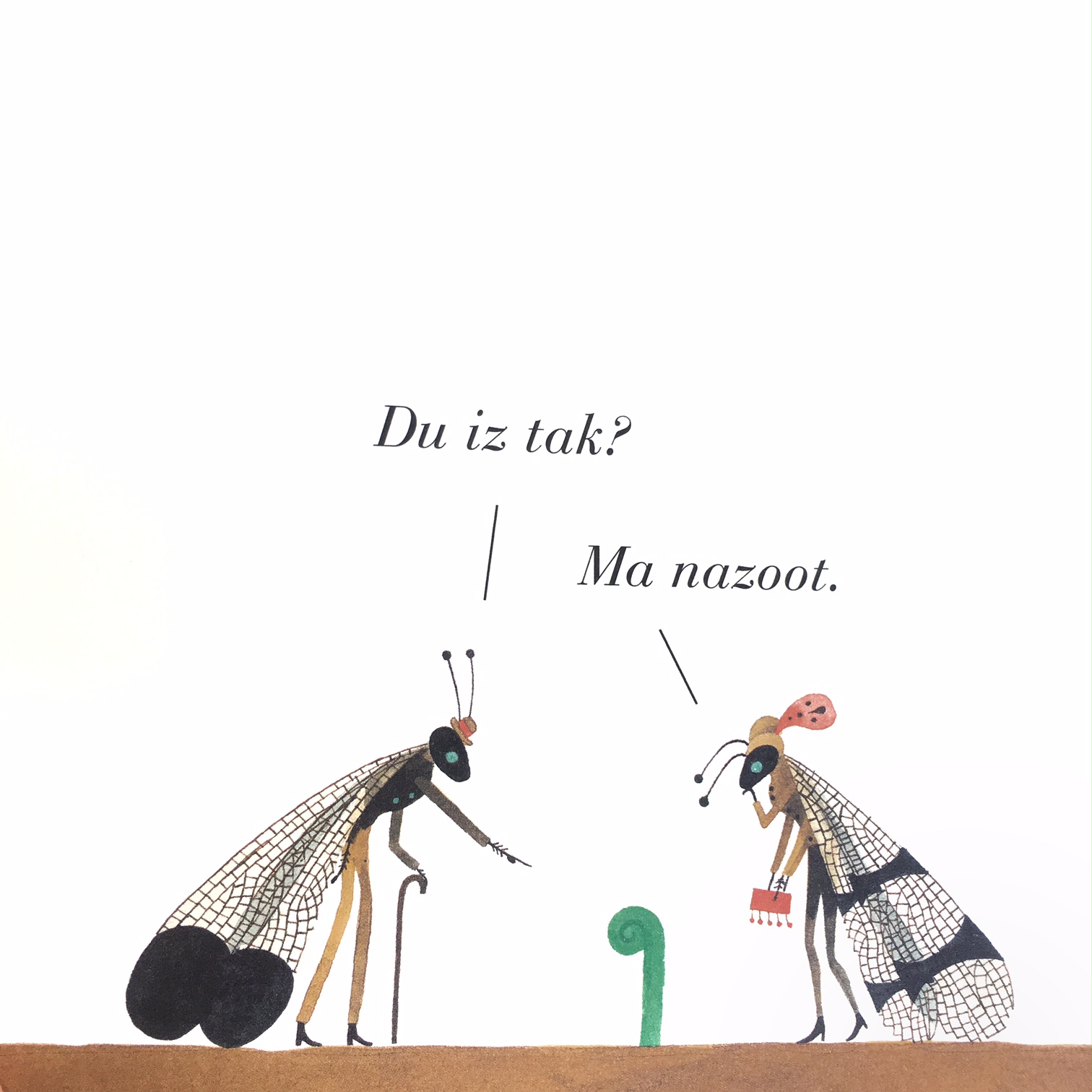
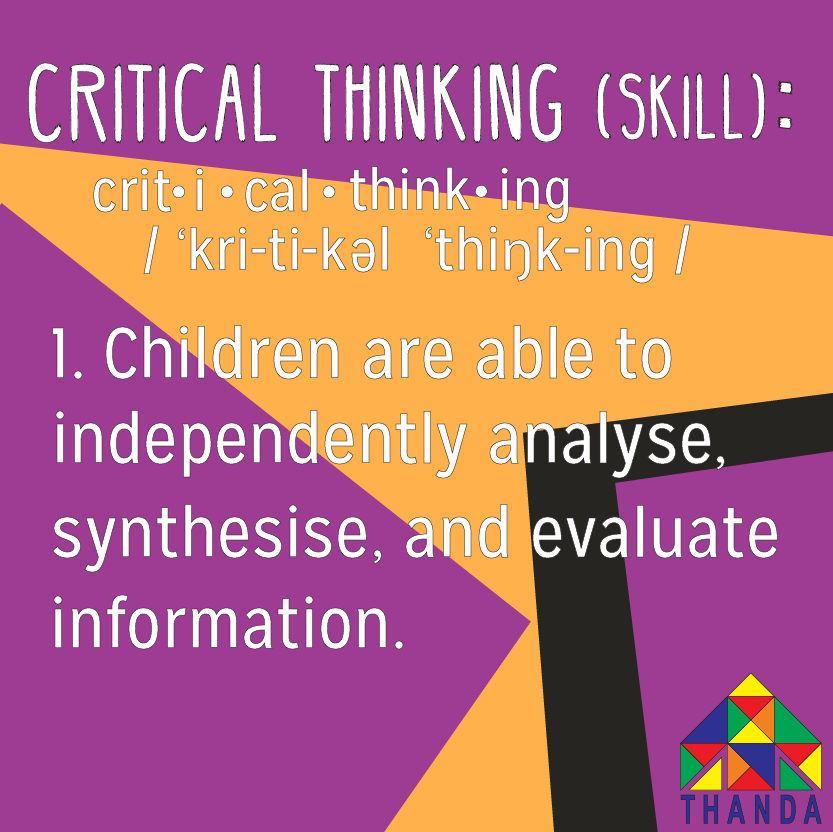
At Thanda we define Critical Thinking as: “Children are able to independently analyse, synthesise, and evaluate information.” Du Iz Tak, which follows a community of bugs through the life cycle of a flower, requires a great deal of critical thinking, because the very act of reading it involves decoding the book’s unique language. The book asks the reader to piece together information of many different types—visual clues, understanding of cause and effect, inferences drawn from knowledge of other languages, etc.— to develop a full understanding of the story’s plot and message.
The main goal of reading Du Iz Tak is not simply to learn the made-up language itself, nor is it to explore the natural cycle of life (although it does both of these things beautifully). The point is to develop and practice the skills necessary to foster a curiosity that drives you towards the unknown, rather than away from it. These skills can then be translated into the real world, say when a new neighbour doesn’t speak the same language, or a sign on the road is missing a few letters, or a certain crop doesn’t grow in one spot of your garden. Critical thinking is a key tool in the arsenal of life skills that allows you to take in all of the information that is presented to you, look at it from different angles, piece it together, and come to the best conclusion you can.

Another activity that speaks to Thanda’s commitment to developing critical thinking skills is chess. Every learner in our After-school Programmes is exposed to chess, and there are currently 118 children on Thanda’s competitive chess team. Playing chess at any level involves critical thinking—players must read the whole board, understand how each piece moves, and develop a strategy. And while these skills are developed on an 8-by-8 square grid, it has never been limited to that. Chess’ origins lie in ancient Eastern cultures, where nobility and military leaders used the game to strategize tactical movements for the various divisions of their soldiers. Accordingly, the point of learning how chess pieces work is not simply to move them individually, but to see how they can work as a group, and to weigh different possibilities in order to strategize the best possible outcome. At Thanda, those same chess skills, once used to overcome other civilizations, are used to overcome personal fears, insecurities, and self-doubt. Children develop respect for themselves and one another, form an understanding of how people can work together towards a common goal, and learn to apply past experiences to future challenges.
One voice that has recently echoed around the Thanda education office is that of David Foster Wallace. Though he was a complicated and troubled character himself, Wallace had a great deal of insight on the act of thinking critically. In a speech Wallace gave in 2005, later adapted into the book This is Water, Wallace said
“learning how to think really means learning how to exercise some control over how and what you think. It means being conscious and aware enough to choose what you pay attention to and to choose how you construct meaning from experience.”
We see this choice as a crucial component of our approach to critical thinking. Education shouldn’t just give you knowledge, it should empower you to take that knowledge and use it, synthesise it, in order to better yourself and your world.
In a recent interview, one of our Grades 2&3 Facilitators, Halala, mimicked these sentiments when reflecting on the textbook and rote memorisation culture in most schools. “I think just looking at the fact that we had textbooks at school and you knew what the textbook said you needed to know… we never really got to ask why, how, when and all of those things. We were always just told this is how it is going to be.” She explained that textbooks tell you the first man to walk on the moon was Neil Armstrong, but no one tells you what to do with that information, why it’s important, or how it’s relevant. On the other hand, reading books and doing activities about space in her classroom, Halala says, leads her and her students to really think about the moon, what its presence in our night sky means for us, and ask questions about it. Shifting the focus from knowing things to thinking about things allows learners to look up at the night sky with wonder and curiosity, embracing the unknown and the questions it brings. Then, when they circle back to their textbooks and people like Neil Armstrong, they do so with a sense of excitement. These facts are then not simply an end, but a means to a beginning – the starting point for another avenue of exploration.

Just as reading Du Iz Tak isn’t just about learning how to speak a made-up bug language, and learning chess isn’t just about how to move some pieces around a black-and-white grid on a table, learning in our After-school Programmes isn’t just about retaining facts presented in our lesson plans. Our Creative Learning Curriculum empowers participants to find ways to use those facts, along with the other facts they encounter in the world, and to turn them over and combine them in new and different ways. Children will then come to new conclusions—even if those conclusions are just another set of questions.


